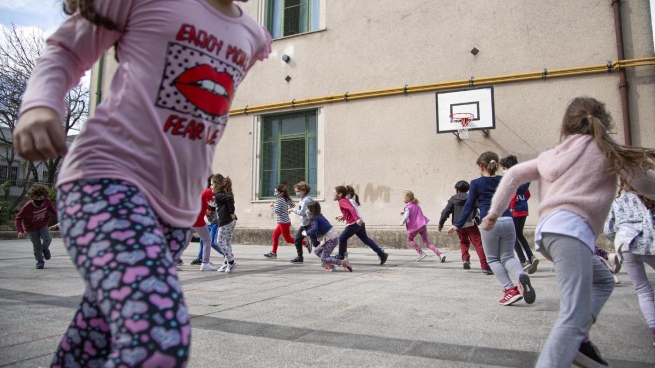Enrollment in 4- and 5-year-old kindergartens across the country has grown in recent years and is greater than 90 percentwhile there is still progress to be made in the coverage of the 3-year-old room, where 42.3 percent of children of that age attend, according to a survey by the Argentine Observatory for Education.
The 4-year-old room is the sector that increased the most since it went from 55.7 percent registered in 2006 to 89.1 in 2020a percentage increase of 33 points, especially in the child population of the most vulnerable sectors, while in the 5-year ward coverage reaches 98.1 percentaccording to the study.
This indicates that 9 out of 10 girls and boys in Argentina attend the initial level of education, which is compulsory from the age of 4.
On the other hand, for the 3-year-old room the percentage is still much lower and represents 4 out of 10 girls and boys of that age.
“Given the enormous importance of attending children at the initial level, having achieved and sustained the universalization of the 5-year-old room and being close to doing so in the 4-year-old room is extremely encouraging,” said Melina Furman , PhD in Education and co-author of the report.
“Given the enormous importance of attending children at the initial level, having achieved and sustained the universalization of the 5-year-old room and being close to doing so in the 4-year-old room is extremely encouraging”Melina Furman
The specialist stressed that the study “shows that this increase in access is related to an increase in supply, that is, when a room or garden is opened, they fill up,” which “speaks of the need to increase the amount of rooms of 3 years throughout the country, which are not yet mandatory”,
For her part, Gabriela Fairstein, professor and researcher at the UBA and Flacso, stressed that “there is growth in coverage and access at the initial level, particularly in 4-room rooms and in the lower-income population, but although they are data encouraging, which show a democratization, let us remember that coverage is not equal to quality”.
“Here the question arises about the situation of the nursery school (for children under 3 years of age), where growth is slower and the offer is scarce, fragmented and unequal”Fairstein said.
The offer of sections (rooms) also had a strong growth between 2004 and 2020 in room of 3 and 4, and to a lesser extent in room of 5, according to the survey of the Argentine Observatory for Education.
In that of 4, the theaters increased by 90% (fundamentally in the state sector) in that of 3 they grew by 83% (93% in the state sector and 71% in the private) and in that of 5, which already had high coverage levels grew by 12% (6% in the state sector and 30% in the private sector).
full acknowledgment
Spokespersons for the Argentine Committee of the World Organization for Preschool Education (OMEP) stressed that Argentina “adheres to international treaties that ratify the commitment to extend and improve comprehensive early childhood protection and education, especially for boys and girls who live in more unfavorable situations
“The first step – they added – is its full recognition in legislation and its realization through public policies, with sufficient resources to guarantee the specificities of this stage and the pedagogical identity of initial education”,
The report also highlights the inequalities that exist between provinces in this expansion.
In 2020, room coverage of 5 is above 93% in all provinces.
The provinces that have increased their coverage the most are Santiago del Estero (from 81% to 97%), Catamarca (from 90% to 100%) and Formosa (from 94% to 100%).
Coverage differences are more marked in room 4, where there are 3 provinces with coverage less than 80%: Salta (75.9%), Formosa (76.1%) and Neuquén (77.1%).
On the other hand, 10 provinces have coverage greater than 95%: Catamarca, Córdoba, Chubut, La Pampa, La Rioja, Mendoza, San Juan, Santa Cruz, Santiago del Estero and Tierra del Fuego, while Buenos Aires has little more than 93%.
The province that increased its room coverage the most since 2006 was La Pampa (from 17% to 100%, that is, an increase of 83 percentage points), followed by Misiones (from 13% to 88%), Catamarca (21 % to 96%), San Juan (from 26% to 100%), Tucumán (from 15% to 86%), Mendoza (33% to 98%), Corrientes (from 24% to 87%) and Chaco (25% to 88%)
Between 2004 and 2020, the provinces that expanded their supply of 5-room rooms the most were Tierra del Fuego (with an increase of 42.6%), Santiago del Estero (34.4%), Santa Cruz (33.0%).
















